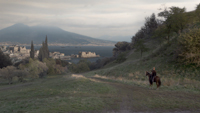
SPIN VFX in Toronto is contributing major 2D and 3D environmental work to all three series of ‘The Borgias’ from Showtime.
| The second series has been nominated for four Emmy Awards this year, including one for Outstanding Special Visual Effects for a Series in a Supporting Role. The SPIN VFX team have already been working on the preproduction and asset builds for several weeks for the third series, which is now in production. |
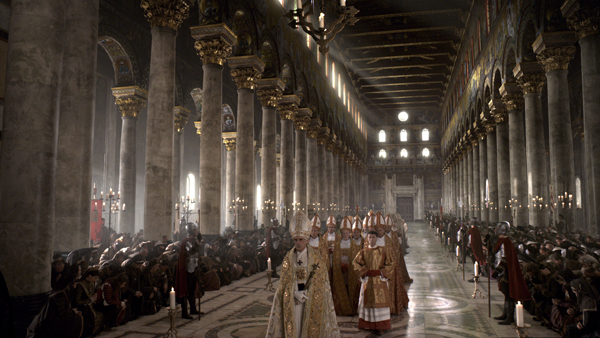 |
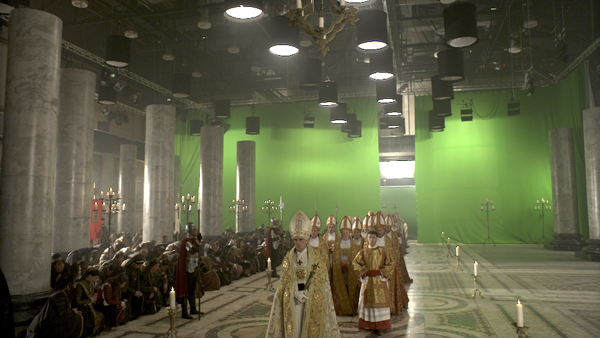 |
|
On Set Documentation “We have developed a highly detailed camera report template that is documented for each shot. This includes lens grids, witness cameras, HDRIs and so on. For any asset build, our team also takes thousands of reference images from all locations to help develop textures, matte paintings and general environments. Lidars are always provided from production as well. During the shoot our crew in Toronto is able to ingest all of this material as it happens. This allows us to determine if any additional elements might be required and get those elements collected while the crew is on location.” |
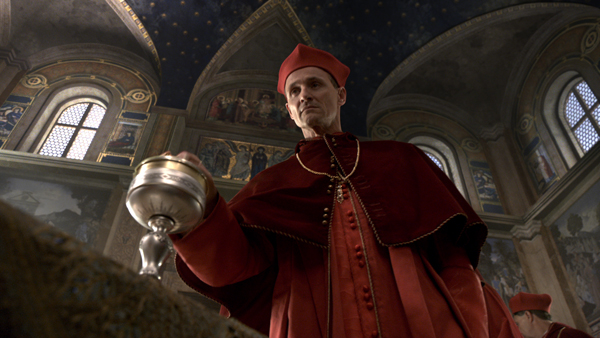 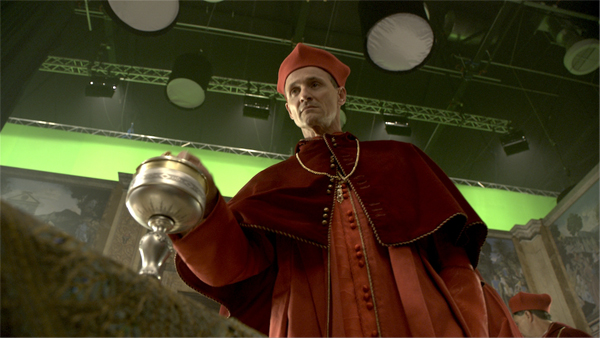 |
|
The episode features a sequence in which the ceiling of St. Peter’s Basilica in Rome collapses after being struck by lightning. It opens with a long crane shot tilting down from the ceiling to reveal parishioners at Mass below and designed to foreshadow the impending collapse that brings the episode to a dramatic finale. The textures and lights are extremely detailed and varied and attract the eye as the camera moves through the set. For textures, they are using Mari and Photoshop. Key Location |
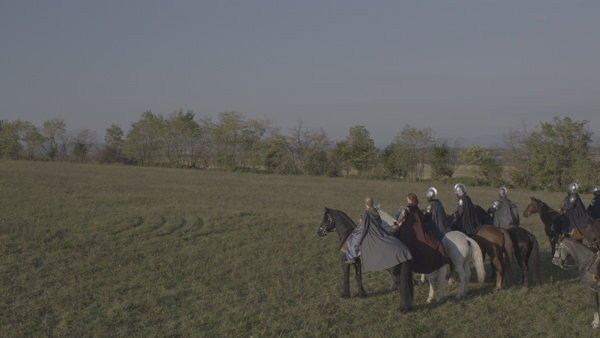 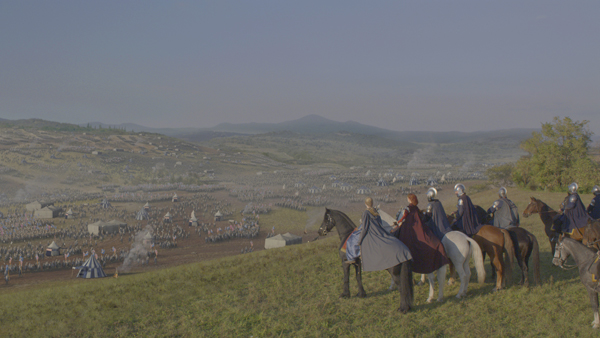 |
|
The digital model was 3D tracked and positioned to extend the set beyond the top of practical walls and into the ceiling, using PFTrack. A 3D Lidar scan of the set was used to ensure precise alignment with the physical set. “During the shoot, we will record a witness camera for all takes – that is, a video of the actual camera performing the move - to ensure that our layout artists have as much information as possible to re-create the move with precision.” Their 3D pipeline is based on Maya for modelling and lighting, with RenderMan, and compositing done in Nuke. Storm Simulations |
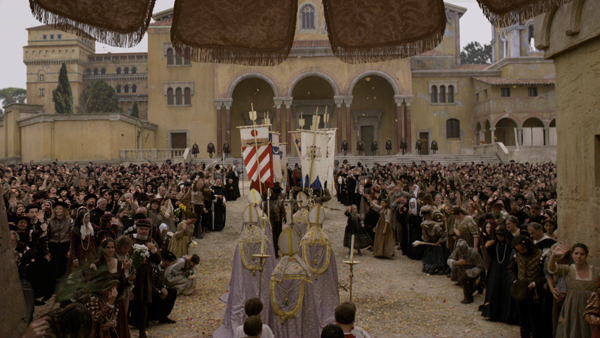 |
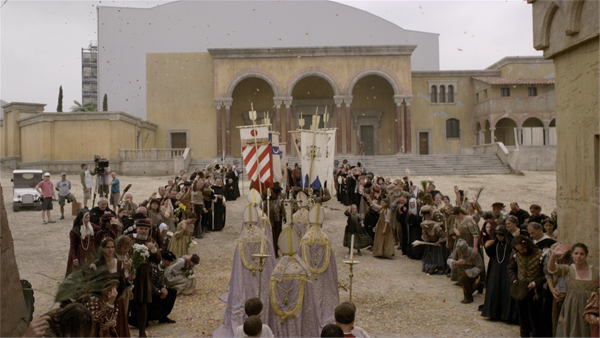 |
|
“Because it was stand-alone in the cut, it was necessary that the scene was immediately recognizable. We started with a Lidar scan of the St. Peter's Square location to ensure that our foundation would match the set and surrounding geography as much as possible. Once we had created the camera move however, we took some creative leeway with the layout to make the shot more dynamic. These changes affected the background buildings and deep background environment only, keeping the focus of the shot familiar to the audience.” Another completely digital shot was created for the moment when the Basilica ceiling is blown apart and begins to collapse. Fluid and particle simulations were generated for the debris explosion ranging from large structural pieces of wooden beam, to small sifts of dust. To prepare this simulation to maintain realism in the shot and make sure it would fit the drama of the story, Luke said it was important to understand the explosive force that a lightning strike inflicts and the scale of damage it causes. “The strike needed to disrupt the structure of the ceiling on impact and dislodge large sections. As this happened, sifts of dust come loose and small debris break and fall. It was key to establish these beats so that the collapse felt progressive and logical, not a singular event like a detonated explosion.” |
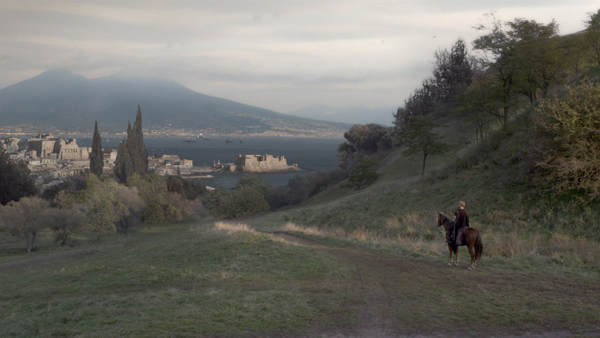 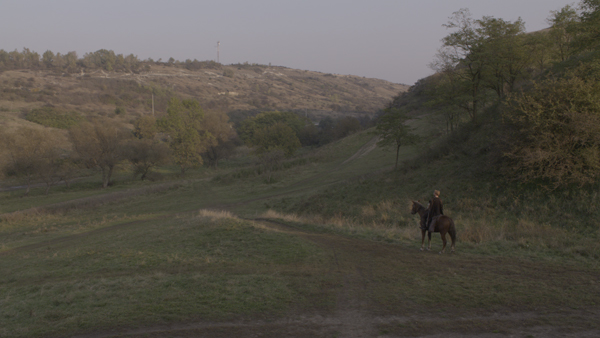 |
|
Power and Wealth SPIN also replaced several of the shoot location’s landscapes with lush 2.5D matte paintings. “Most of the landscapes that we replace are real-world locations that we match to present-day reference and then age to reflect the period,” said Luke. “In a lot of cases we will be provided with initial concepts for the composition of these locations if there are any creative leaps we need to take. One of the crucial issues with all landscapes, however, is the foliage. Because we shoot in Budapest, we miss the recognizable Italian greenery such as Cypress trees and Umbrella pines. Therefore, even if we aren't replacing the entire background, we often find ourselves adding these features in many shots.” www.spinpro.com |
| {gallery}stories/Sept-12/Borgias{/gallery} |
| Words: Adriene Hurst Images: © 2010 Take 5 Productions. |


















